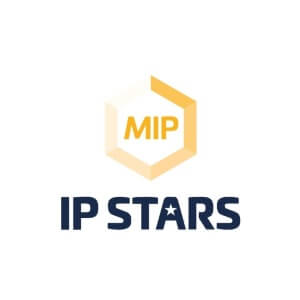Over the last three years, the New Zealand and Australian intellectual property (IP) profession has undergone a significant change
Legislative amendments to both the New Zealand and Australian Patents Acts have meant that IP firms can now incorporate. This has led to a trend where eight of Australia’s top ten biggest IP firms, having previously operated as traditional partnerships, have been acquired by publicly listed companies, as a means of raising capital and additionally providing an exit strategy for partners wanting to cash out.
Since November 2014, three IP holding companies have listed on the Australian Stock Exchange (ASX) – they are:
- Intellectual Property Holdings (IPH) comprising Spruson & Ferguson, Fisher Adams Kelly Callinans, Pizzeys Patent and Trade Mark Attorneys, Cullens Patent and Trade Mark Attorneys, Ella Cheong in Asia, and most recently AJ Park;
- Xenith IP comprising Shelston IP, Watermark, and Griffith Hack; and
- QANTM IP comprising Davies Collison Cave and Freehills.
In October 2017, AJ Park became the latest acquisition of IPH and is notably the first of its kind in New Zealand. AJ Park is now New Zealand’s first IP firm to be owned by a publicly listed ASX company.
Many in the IP profession, along with those who use the services of Australasian patent and trade mark attorneys, view these changes with concern for a number of reasons.
Higher shareholder returns or better client service?
The consolidation of the IP market will likely have long-term consequences for inventors and owners of IP. At the very least, acquisitions such as AJ Park and others are likely to impose pressure on their respective holding companies to meet investors’ lofty expectations and maximise shareholder returns.
A survey of clients of ASX-listed IP firms in Australia conducted by Beaton Research + Consulting noted heightened anxiety about the pressures to maximise billings which fall on an IP firm owned by an ASX-listed company. One such pressure is having to maintain forecasted profit targets to maintain stock values.
IPH, Xenith, and QANTM have each seen the value of their shares fall due to a failure to meet some lofty expectations built into their share price:
- In November 2016, IPH saw its share price sink more than 40% to $5.25 – a long way from its highs of $9.43. In the year since this decline IPH’s share price has recovered slightly to just $5.75;
- In May 2017, the QANTM IP share price fell 28% to $1.21 after reporting that legal and advisory service charges were below the prospectus forecast level; and
- In October 2017, Xenith IP provided the market with a trading update which revealed that its first-quarter performance had fallen short of expectations causing its share price to decline a massive 30% to $1.17 – bringing its year-to-date decline to more than 56%.
In a recent article by The Australian Financial Review it was reported that, when Xenith IP bought Griffith Hack, the acquisition included an intriguing bonus for the partners. If they hit a minimum of $14.5 million annualised EBITDA– a figure that would require them to bill clients enough to make an extra $6 million EBITDA over five months – they stood to get an additional payout worth up to $20 million in cash and shares. This sparked five months of abnormal billing activity with insiders describing juniors, secretaries, and lawyers working long hours to push enough bills out the door. Though they came tantalisingly close, falling short by only $276,000, they went home with nothing.
The tidings were better for the former owners of Watermark, another IP law firm which was bought by Xenith IP last November. They had to hit annualised EBITDA of between $2 million to $2.7 million to get a bonus. They managed to hit almost $3 million by the end of the financial year, netting them the maximum payout of $5.6 million.
Potential conflicts
There is unease regarding conflicts of interest amongst firms which are owned by the same ASX-listed holding company and are ultimately controlled by its board of directors. While such firms still represent themselves as separate IP firms and compete against each other, they often share common IT systems and backroom support, and their profits go to the same shareholders. This approach means that firms owned by the same parent company and are governed by the same board could find themselves representing opposing parties in a legal dispute or many of the competitors/rivals in particular commercial fields.
Consider this scenario: two IP firms (‘A’ and ‘B’) are owned by the same parent company and represent opposing parties in a contentious patent opposition proceeding. When the stakes are high, how many clients would be comfortable knowing their adversary is being represented and advised by attorneys from the same ‘family’ or holding company? Or that the firms’ owners are profiting from the fees generated by the firms on both sides of the dispute? As clients become more aware of this potential for conflict, we anticipate that many will transfer their IP portfolios to truly independent firms.
Increased costs and fees
ASX-listed companies face substantial costs which traditional IP firms do not. These include the expense of having an independent board of directors, running the Board, and satisfying the many reporting and regulatory requirements associated with operating a publicly listed corporation. The Beaton Research + Consulting report noted heightened anxiety amongst clients that such costs would ultimately be borne by clients of the IP firms.
Other concerns found by the same survey (and not already discussed) include:
- Cashed up partners in ASX-listed IP firms will be less concerned about client service now that they are merely salaried employees and can leave if they want; and
- Senior attorneys and rising stars in ASX-listed firms who missed the payout may no longer be so committed to the business and its clients because the equity partnership they had been working towards is no longer a prospect.
James & Wells – Proud to be independently owned and managed
James & Wells is not affected by the external pressures of being owned by a publicly listed company and has been growing off the back of its large domestic and international client base. The firm remains strong and continues to maintain its top-ranking leadership position, having adapted and grown, by choosing to evolve and innovate like the clients James & Wells represents.
The partners at James & Wells are determined to remain an independently owned and managed IP firm so that we can focus on providing the best possible service to our clients free from external pressures and the heightened risk of conflicts with co-owned firms.










